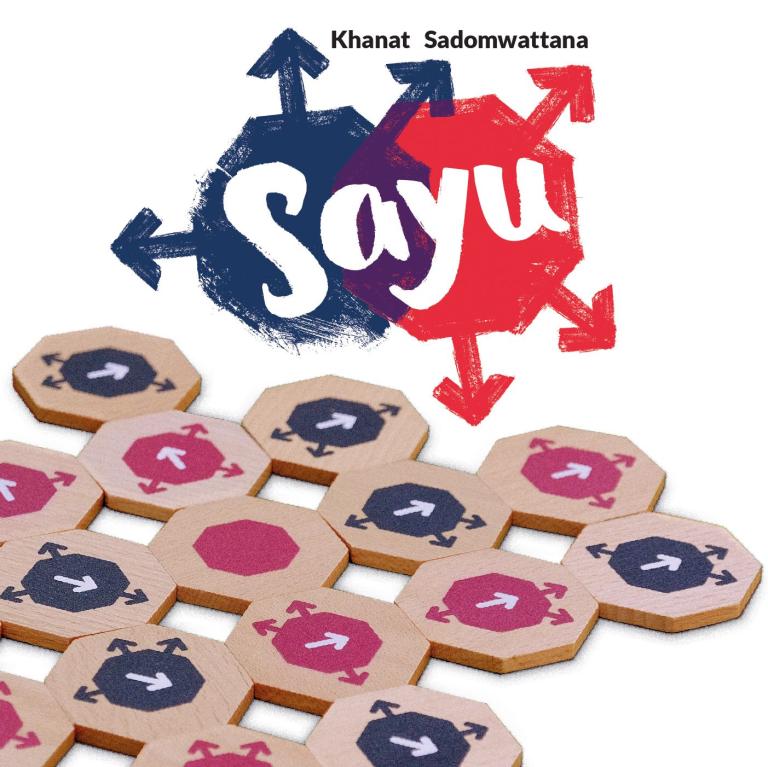Sayū

Sayū
Sayū is an abstract strategy tile-laying, tile-flipping for two players. It is played with 49 unique two-sided octagonal wooden tiles and uses no board. The objective of the game is to have more tile of your color face up when all the tiles are placed.
To setup the game place the home tile at the center of the table. This tile has no arrows. From now on no tiles can be placed further than 3 spaces away from this tile (this creates a 7 by 7 grid when finished).
Players then take alternate turns. On your turn you must choose a tile that is still available and place it on an empty space - up, down, left or right of a tile already placed.
You must place it in any of the 8 possible orientations you wish. The orientation of a tile is indicated by the white arrow in the middle.
Once a tile is placed, check whether it can convert an opponent's tile over to your side - to do so you must fulfill three conditions;
1) your tile must have your color arrow pointing toward your opponent's tile
2) the target opponent tile must not have their color arrow pointing back
3) the two tiles must not share the same orientation
If multiple tiles can be converted at the same time you may only choose one.
The converted tile is flipped over to your side and rotated to the same orientation as one that converted it. You then treat that tile as though it just been placed and check if another conversion can be made. Repeat this process until no further conversion is possible.
Now it is your opponent's turn.
Players will take turn placing and converting tiles back and forth in this manner until all the tiles are placed and the game is over. Count up the total number of tiles for each player; whoever has the most of their color facing up is the winner.
To setup the game place the home tile at the center of the table. This tile has no arrows. From now on no tiles can be placed further than 3 spaces away from this tile (this creates a 7 by 7 grid when finished).
Players then take alternate turns. On your turn you must choose a tile that is still available and place it on an empty space - up, down, left or right of a tile already placed.
You must place it in any of the 8 possible orientations you wish. The orientation of a tile is indicated by the white arrow in the middle.
Once a tile is placed, check whether it can convert an opponent's tile over to your side - to do so you must fulfill three conditions;
1) your tile must have your color arrow pointing toward your opponent's tile
2) the target opponent tile must not have their color arrow pointing back
3) the two tiles must not share the same orientation
If multiple tiles can be converted at the same time you may only choose one.
The converted tile is flipped over to your side and rotated to the same orientation as one that converted it. You then treat that tile as though it just been placed and check if another conversion can be made. Repeat this process until no further conversion is possible.
Now it is your opponent's turn.
Players will take turn placing and converting tiles back and forth in this manner until all the tiles are placed and the game is over. Count up the total number of tiles for each player; whoever has the most of their color facing up is the winner.
Player Count
2
Playing Time
15
-
45
Age
8
Year Released
2022
